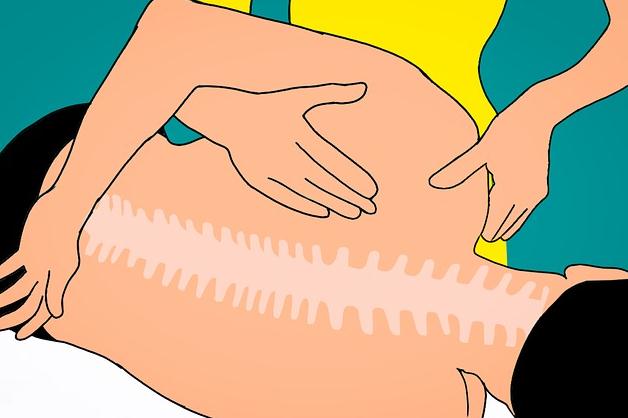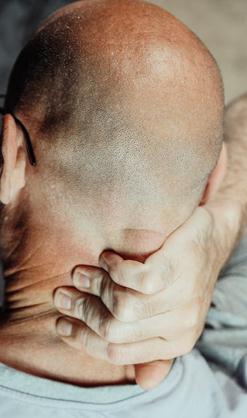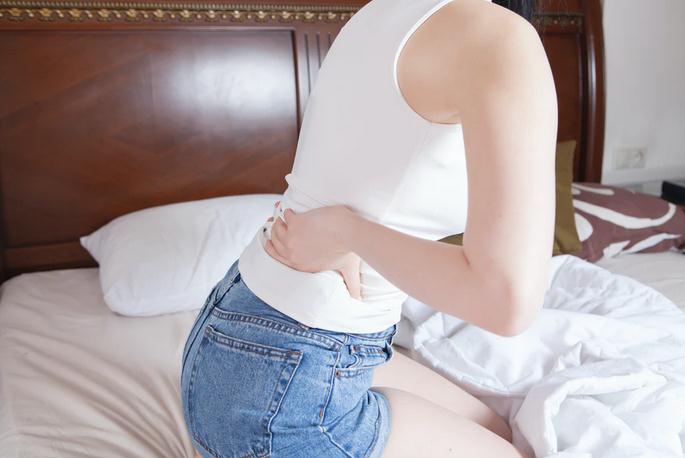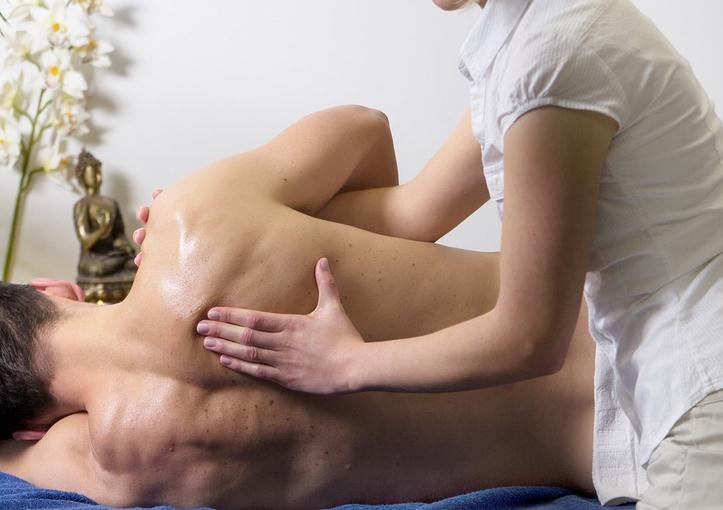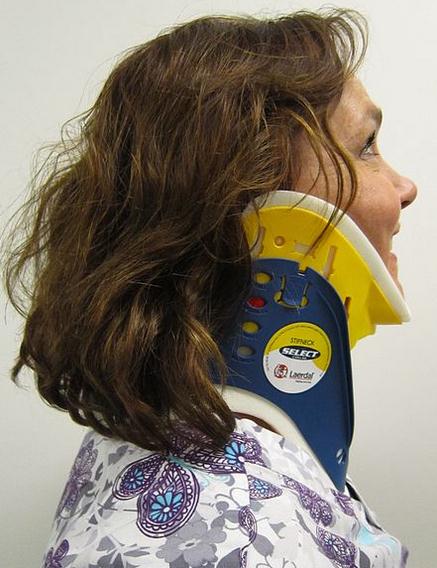Dropped Head Syndrome (DHS) is identified by critical kyphotic deformity of the cervicothoracic spine. Comparatively, it’s a rare body condition, with a broad list of differential diagnoses. DHS can be categorized into neuromuscular, neurological, muscular, and several other causes. This deformity has critical implications on the life of affected individuals. They face restrictions to ambulation, social interactions, and daily life activities. In a layman’s language, people suffering from DHS are unable to keep their heads upright. This is due to the mechanical problem arising due to the instability and weakness in your cervical spine, including the neck ligaments.
1. Causes of Dropped Head Syndrome (DHS)
Mostly, Dropped Head Syndrome (DHS) is caused by a particular generalized neuromuscular diagnosis. These include Lou Gehrig’s disease (ALS), Myasthenia gravis, and Genetic myopathies.
1. Lou Gehrig’s Disease (ALS)
In the bodies of individuals suffering from ALS, the bulbar can’t function properly (dysarthria, dysphagia, dyspnea), along with the weakening of NEMs. The features of an upper and lower motor neuron are also affected. Weakness is progressive but diagnosis is also not difficult. There is a mild CK elevation and extensive EMG denervation.
2. Myasthenia Gravis
Mostly, this condition is characterized by fatigable diplopia and ptosis. In MuSK Myasthenia Gravis, fluctuating dysarthria, dysphagia, atrophy, and tongue weakness may lead to diagnostic confusion with ALS. In about 30 percent of cases, it shows a diminishing response. Even the cases related to tongue fluctuations are reported alongside MuSK MG cases. DHS patients must be tested for MuSK antibody titer.
3. Metabolic Myopathies
These include acid maltase deficiency. The weakness of important respiratory muscles is an important indicator.
4. Inflammatory Myopathies
In such conditions, neck extensors are damaged in isolation.
5. Dystrophic Myopathies
These include dysferlinopathies and Facioscapulohumeral Muscular Dystrophy (FSHD).
6. Monoclonal Gammopathy
Adult-onset nemaline myopathy is prominent in an individual with monoclonal gammopathy.
Including hypothyroidism, motor neuron disease, cancer, and disorders of the spine, many neurological conditions can be the cause of DHS. They are as follows.
- Parkinson’s disease
- Cervical myelopathy
- Cervical dystonia
- Multiple system atrophy
- Post-polio syndrome
- Neuromuscular causes include myasthenia gravis (MG)
- Chronic inflammatory polyneuropathy (CIDP)
- Muscular causes include primary inflammatory such as polymyositis
- Isolated inflammatory axial myopathy
- Lambert-Eaton myasthenia syndrome (LEMS)
- Primary non-inflammatory conditions (nemaline myopathy, mitochondrial myopathy, and congenital myopathy)
- Scleromyositis
- Polymyositis
2. INEM
When the cause of Dropped Head Syndrome (DHS) is unknown, it is known as Isolated Neck Extensor Myopathy, or more commonly called INEM. This form of DHS often occurs in older people. The main cause comes out to be the weakness of back muscles in the neck, for three months. A very few numbers of the elderly, who age healthily, don’t fall victim to this rare body condition.
3. Symptoms of DHS
There are many symptoms of Dropped Head Syndrome (DHS), and they vary from person to person. The gradual weakness of extensors leads to posterior cervical pain, and the affected individual is unable to lift their head from the pillow, therefore the patient turns to the side before sitting up. Affected muscles are edematous, atrophic, and replaced by fat. As the condition progresses, it becomes hard to hold the head up for a longer time. After some time, the head remains dropped and the person has to hold his chin to lift the head. However, the most common symptoms include,
- Severe cervicothoracic kyphotic deformity i.e. Hunchback deformity.
- Severe declines in cervical range of motion.
- Head down position, with severe head and neck pain.
- Presence of spinal cord myelopathy i.e. Upper Motor Neuron Signs.
- Symptoms of Upper Motor Neuron Syndrome
- Difficulty in swallowing
- Weakness in muscles
- Clonus – involuntary muscle contractions
- Overactive or over-responsive reflexes, i.e. Hyperreflexia
- Difficulty with speech
- Loss of muscle control/spasms/tightness
- Progression Of Upper Motor Neuron Syndrome May Lead To:
- A decline in ambulatory ability, i.e. your ability to move.
- Obstruction of cerebrospinal fluid flow and Spinal cord compression.
Since the first DHS patient till now, there have been several extensive types of researches carried out by world-renowned medical specialists. This rare disease is still being explored on medical grounds. However, there are symptoms that many patients showed with time. They include mild neurological deficits, such as bulbar or tongue involvement, neck flexor weaknesses, and upper and lower motor neuron signs in the limbs. In addition to the distal muscle movement, upper limbs are weakened. Because of the neck being dropped most of the time, it gets elongated and the curve at the back of the neck becomes accentuated. This can lead to pinching of the spinal cord. When this happens, the affected individual may feel numbness and weakness in arms or their entire body.
4. Treatment of DHS
There are different treatments for DHS, according to varying severity of symptoms. After finding out whether the cause of DHS is neuromuscular (NM) or non-neuromuscular (NM), having a look at medical/family history, doing physical examination and imaging, certain treatment is advised by the doctor. Mainly, there are three kinds of diagnostic procedures that are used to treat DHS. They are as follows.
- Surgery
Mostly, conservative and pharmacological protocols are tried before going for the surgery. However, if this approach fails, the patient has to undergo Subaxial Fusion Surgery, across the cervicothoracic junction. Fusion from C2-T2 maintains or preserves movement of the upper Tx spine and Cx spine. This procedure will help to prevent excessive Tx kyphosis, observed in DHS patients.
- Using Support Or a Brace
Support and braces can be used to maintain correct postural alignment, an upright gaze, and encourage comfort with ADLs. They can also facilitate the process of proper swallowing, breathing, and feeding. Braces may be rough on the patient’s skin, but they can prevent deformity, muscle contractures, compression, neurological symptoms, worsening of myelopathy, and disability. There are several hard and soft collars a DHS individual can use, including vests, corsets, and wheelchair headrests.
- Physiotherapy
For a DHS patient, physiotherapy mainly acts as supportive management. With the help of effective communication, it aims at maintaining the current function by slowing down the progression of the condition. Treatment includes,
- Education
- Balance retraining
- Postural retraining
- Manual therapy & pain management
- Range of motion exercises, to prevent shortening of neck flexors.
- Chest PT, to access pt’s ability to create sufficient inspiration volumes and forceful FET.
- Neck strengthening exercises, including LLVs, UL’s, and trunk muscles.
Maintain Your Life – Straighten Your Neck
In today’s world, when even toddlers are fond of gadgets and are using mobile screens or a tab, it’s becoming difficult for the coming generation to not fall victim to several diseases like Dropped Head Syndrome (DHS). It is a complex and challenging condition. Not only does it affect our bodily health, but it can also bring forth social embarrassment. Most of the DHS patients suffer from this and don’t feel confident about facing the people on daily basis.
Many of the underlying conditions of this rare disease are treatable, and sometimes, the extent of deformity can also be decreased to an acceptable level. However, it can also exceed a certain threshold and can affect our daily life activities. All of it depends on you. Cherish yourself and the elderly around you! Take a good night’s sleep, don’t spend too much time on a mobile screen, and most importantly, maintain your posture. Also make sure that the elderly around you, adopt yoga as a daily practice. It will remove the stiffness from their body, and will also be good for their mental health.

